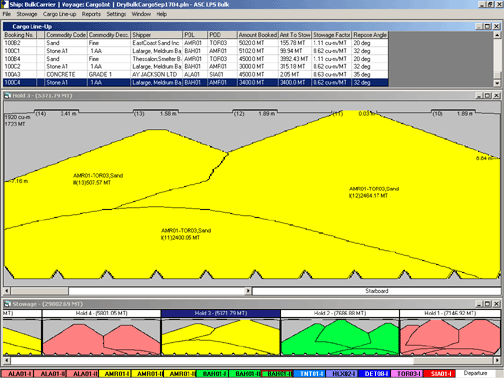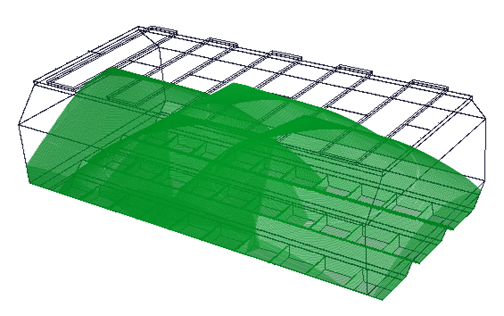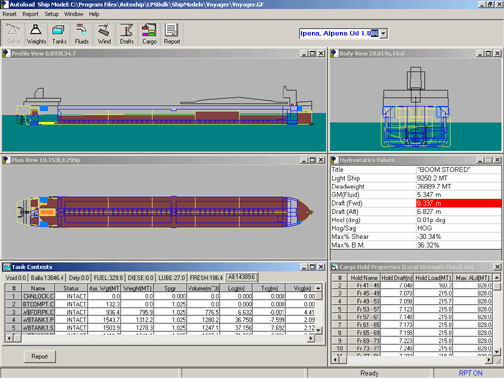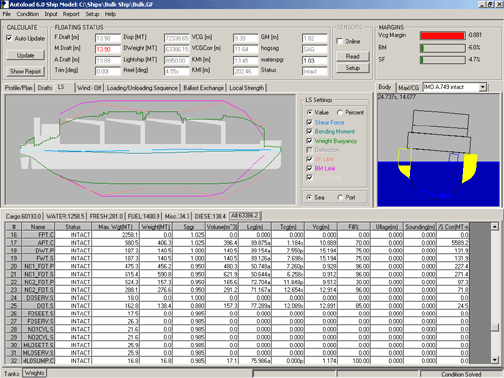LPS Bulk: State of the Art Load Planning Software for Self-Unloading & Conventional Bulk Vessels
Two of the most important things that bulk vessel shippers think about on a daily basis are reducing operating expenses and maintaining high safety standards. LPS-Bulk by Autoship Systems Corporation (ASC) of Vancouver, Canada was designed with increasing vessel safety and reducing vessel operating costs as key underlying principles. These design values, combined with ASC’s commitment to continuous improvement through innovation, have made LPS-Bulk the load planning software of choice among best-of-breed self-unloading and conventional bulk vessel operators around the world. So what is LPS-Bulk and how does it work?

LPS-Bulk Overview
LPS-Bulk is a graphical stowage planning software. It loads and unloads the vessel’s cargo holds taking into account the cargo’s stowage factor and angle of repose. The stowage planner loads cargo using a very intuitive “drag and drop” process, loading either in the centre of the hatch, across the hatch, or as a level surface. The program allows unloading through hoppers in the hold’s bottom if the self-unloading vessel is fitted with tunnel belt systems, or out through the hatches in the case of more conventional bulk vessels. A Lloyd’s and DNV type-approved hydrostatic engine called Autoload calculates vessel stability and longitudinal strength parameters at every loading change. Yet how do these features of the LPS-Bulk program contribute to reducing operating cost and increasing vessel safety?

Reducing Operating Cost
Reducing operating cost (or minimizing the cost/tonne of cargo moved) is achieved through maximizing load-carrying capacity. LPS-Bulk helps bulk vessel owners/operators realize this goal through the following:
- Accurate Loading And Unloading Sequence Reports
LPS-Bulk allows for the planning of unloading and loading sequences that maximize effective use of vessel or shore-based cargo-moving equipment. The sequence reports can be sent electronically to terminal operators well in advance of the ship arrival. Therefore time alongside is used as efficiently as possible, and cargo movement costs are kept to a minimum. - Accurate Load Planning
LPS-Bulk uses exact 3-D models of the vessel’s holds. Loads are accurately defined as distributed weights. Thus, given the correct cargo stowage factor and repose angle characteristics of the cargo, the volume, weight and shape features of the load calculated in LPS-Bulk will be the same as those of the real vessel. The user can therefore maximize vessel loading – both efficiently and safely.

Increasing Vessel Safety
LPS-Bulk includes Autoload, a first principles hydrostatic engine. A true 3-D model of the vessel is used in all program calculations. Therefore at any vessel trim or heel, all results are the most accurate possible. Complete stability and strength reports can be printed, saved, or sent to 3rd parties electronically. These program qualities translate into safer vessel operations both alongside and at sea:
- Alongside
LPS-Bulk is used to develop both loading and unloading sequences. Vessel strength calculations can be performed and saved at user-defined stages, or “runs”, of loading or discharging operations. The LPS-Bulk user modifies ballast tank loading accordingly in Autoload to ensure that bending moment and shear forces stay within the vessel’s allowable limits. - At sea
Autoload is used to monitor all vessel strength and stability in real-time. Connection to vessel tank and draft sensors permits accurate and timely vessel condition analysis. If vessel stability or strength limits are exceeded, highly visible (red in colour) alarms come to the Autoload screen. Autoload can also be used to carry our vessel tank loading scenarios – both for intact and damage scenarios.
Yet even with all these great features, ASC continues to improve LPS-Bulk.

Innovation
Continuous improvement through innovation is exemplified in Autoload. The hydrostatic engine has recently undergone a major upgrade. Among other things, new program features include:
- New User Interface
All key parameters are now permanently displayed at the top of the screen. An enhanced, new layout and colour scheme has resulted in an improved system of alerting the user to unsafe vessel operating conditions. Automatic updating is available. - Ballast Exchange Preparation
Ballasting sequence can be easily set-up, all the while monitoring strength and stability parameters. Easy to use editing, saving and reporting functions are included. - Bulkhead Shear Force Correction
Shear force correction is calculated for double-bottom vessels and alternative hold loading as per DNV and Lloyd’s Register requirements.
These and other new innovative features all strive to make load planning just that much easier, safer and more efficient.
Your Way Ahead
The underlying principles of reducing operational costs, increasing safety and continuous improvement have set LPS-Bulk ahead of all of its competition. Click on Contact Us to find an ASC dealer near you, and see how you too can start profiting from LPS-Bulk.
